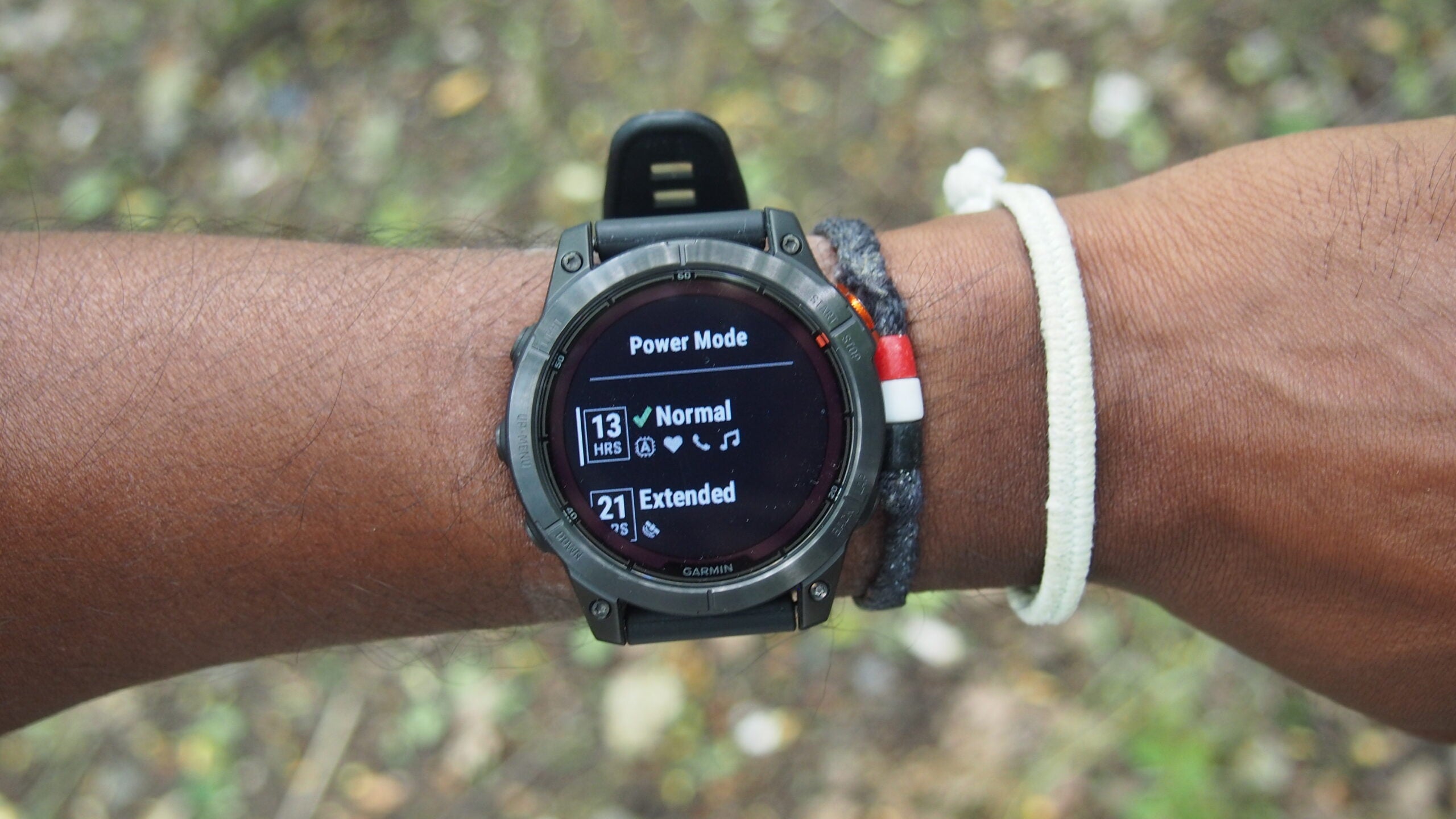Verdict
The Garmin Fenix 7 Pro is another Garmin outdoor watch with big features and a big battery life, but there are few reasons to grab it if you already have the Fenix 7, or you can pick up the non-Pro 7 for less.
Pros
- Still great battery life
- Added map features
- Solid sports tracking
Cons
- Not a hugely different experience from the Fenix 7
- Heart rate sensor doesn’t offer radical improvements
- Improved MIP display just a touch brighter and clearer
-
LED flashlight on all Fenix 7 Pro models:With customisable light options -
Endurance and Hill Scores:Keep a better eye on your recovery -
Next generation Memory In Pixel display:Easier to read outdoors
Introduction
The Garmin Fenix 7 Pro sees Garmin give its much-loved outdoor watch another Pro upgrade after launching the Fenix 7 back in January 2022.
There’s hardware and software improvements onboard, including giving all Fenix 7 Pro models the LED flashlight treatment and adding improved heart rate sensors and displays.
Garmin’s also enhancing features like its already impressive mapping system, as well as implementing more metrics for those who want a clearer sense if all their training is all paying off.
It costs less than the Garmin Epix Pro that has launched alongside it, but is still a pricey watch to pick up for your outdoor escapades. So is it worth going pro on the new Fenix? Here’s our take.
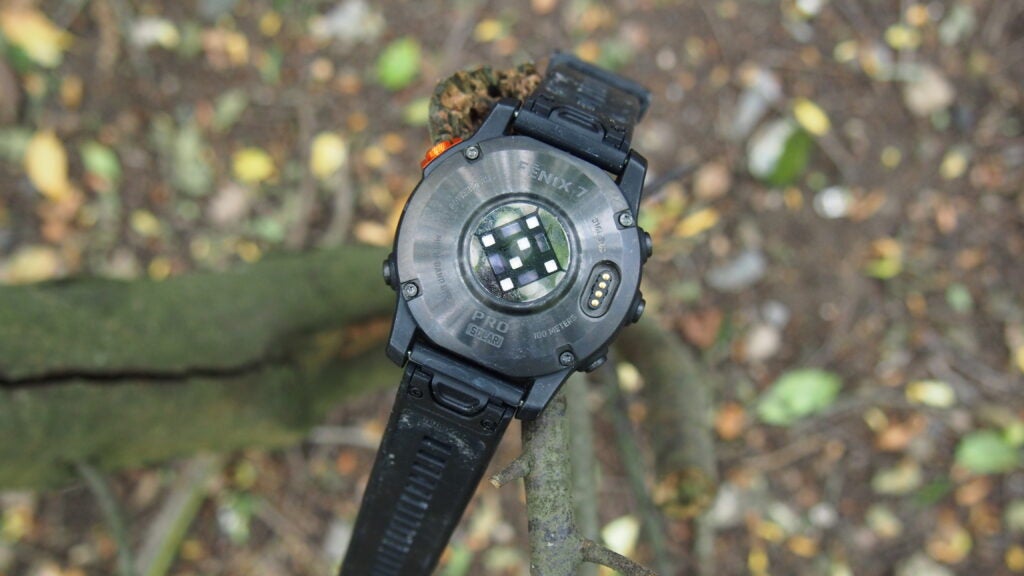
Design and screen
- LED flashlight on all Fenix 7 Pro models
- Improved display
- Upgraded heart rate sensor
- Waterproof up to 100 metres
Like the Fenix 7, the 7 Pro comes in the three same case sizes and is available in standard and sapphire editions with the latter getting you a higher quality bezel, Garmin’s Power Glass lens for additional solar charging and access to preloaded Topo maps. I had the middle 47mm version to test, but if you were to put the Garmin Fenix 7 and the 7 Pro side-by-side you’d easily mistake one for the other.
Garmin has made a few changes to better separate the Pro from non-Pro Fenix, though some of those changes are more obvious than the others.
Up front on the 47mm model, Garmin has a 1.3-inch, 260 x 260 resolution transflective memory in pixel display matching the size and resolution of the Fenix 7, though Garmin says the Pro has an improved transflective display. I’m not exactly sure how it’s been improved and Garmin hasn’t shared a great amount of detail on this either.
Having used the Fenix 7 and the 7 Pro together, I can’t say I’ve seen a huge difference in how the old display and the new display behave when interacting with it, or how it handles more challenging visibility conditions. It’s perhaps a touch brighter and clearer, though I never felt that there was much wrong with the 7’s display.
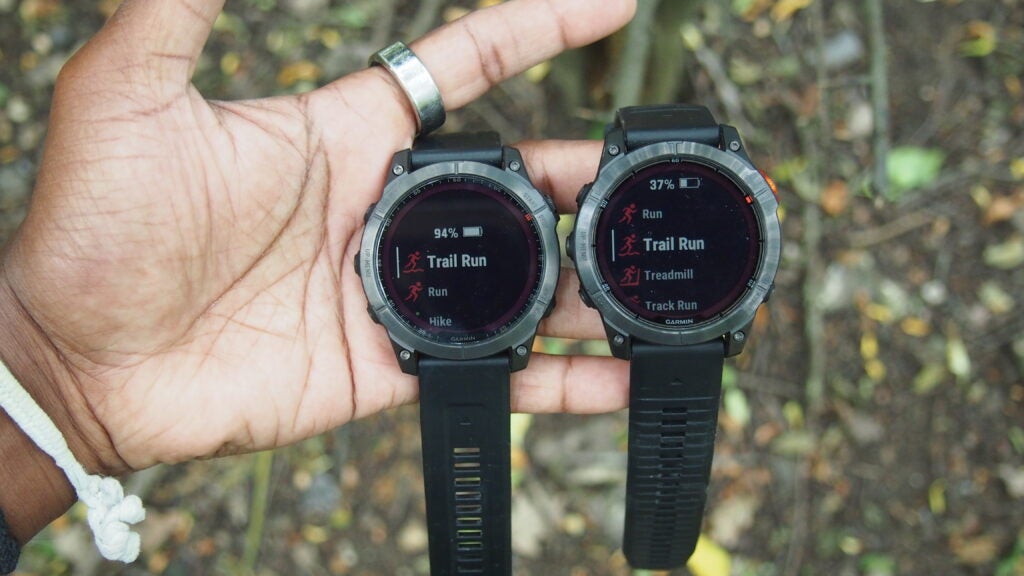
The other big change lies around back with the optical heart rate sensor, where Garmin also says it’s made upgrades and you can clearly see things have changed in that design and the layout of the sensor that delivers heart rate and blood oxygen information. Garmin says it’s built its latest Elevate sensors alongside new algorithms to improve tracking accuracy specifically for a wider variety of activities.
Garmin is now also adding an LED flashlight on all Fenix models, where it was previously only available on the larger Garmin Fenix 7X. That means the 47mm and 42mm Fenix 7 packs that flashlight at the top of the watch case with the option to keep it on during tracking and to set it to multiple modes where it can pulse or blink.
Outside of those changes the Fenix 7 Pro feels a lot like the Fenix 7 to wear. It’s bulkier than Garmin’s Forerunner watches, but the 47mm variant didn’t feel heavy to wear on my somewhat skinny wrists. The strap is comfortable too, and is easily removable plus you’ve got a 10 ATM waterproof rating, which meant it was fine in our pool and open water swims.
Software and smartwatch features
- Works with Android and iOS
- View and respond to notifications
- Tweaked workout menu UI
Garmin hasn’t sought to make wholesale changes to the software experience on and off the watch, or in how it behaves when you’re not tracking your outdoor pursuits.
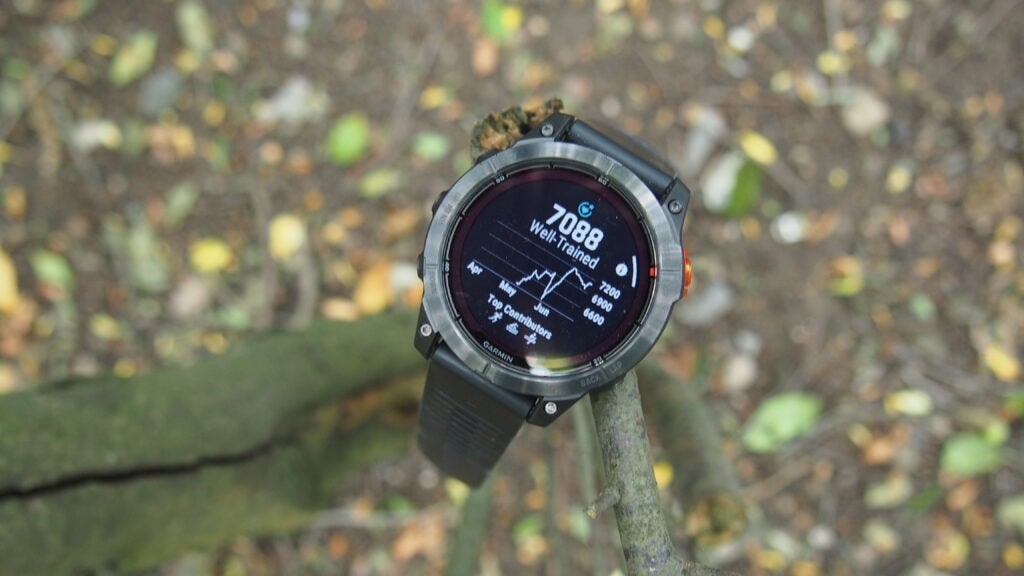
It works pretty consistently across Android and iOS with the Garmin Connect app, and while it lacks the AMOLED display used on Garmin’s Epix and Venu series, as well as the latest Forerunner watches, you do still have a touchscreen that’s responsive and a user interface that’s fairly customisable. There’s an overwhelming amount to tweak so if you’re moving up from a simpler watch, there’s a definite learning curve to knowing exactly how much this watch is capable of.
There are some small changes with the UI, mainly when entering into the menus before workout tracking where Garmin has grouped together settings for training, navigation, data screens, GPS mode and additional settings to try and simplify the process of tinkering exactly what it is that you’re after.
Beyond that it’s much the same as what we got on the Fenix 7 and that includes its smartwatch features. It still offers a good way to view notifications while the touchscreen elevates the usefulness of having music player and music controls, and if you have a supported bank then you do still have Garmin Pay on board. It’s the best sports watch that behaves like a smartwatch and while it’s not quite comparable to the Apple Watch Series 8, it should still serve those who yearn for a mix of the two form factors pretty well.
Fitness tracking
- Upgraded HR sensor
- Endurance and Hill scores
- More preloaded activities
Like previous Fenix Pro models, the Fenix 7 edition is about giving you everything available on the non-Pro Fenix that launched before it, and that core sports and activity tracking experience is very similar as a result.
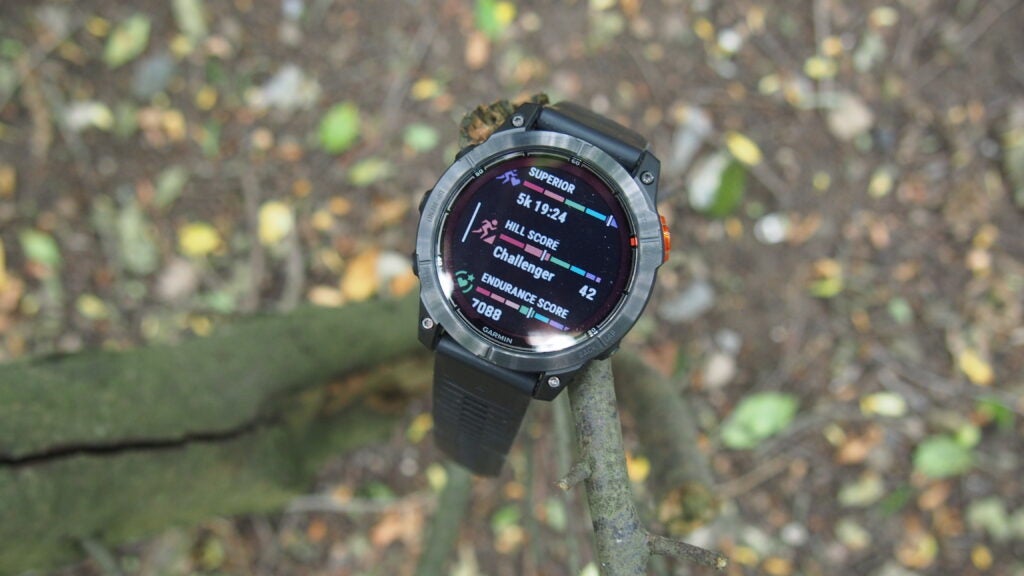
Whether you’re using it for runs, swims, hikes or long walks, there’s a vast array of metrics, analysis, accurate GPS performance thanks to Garmin’s multi frequency positioning and rich mapping support, plus you feel like you’re wearing a watch that’s built to handle more rugged use.
One area that Garmin has sought to improve however is its mapping, adding features like relief shading to deliver more detailed maps, as well as an Up Ahead feature to let runners know about upcoming points of interest and checkpoints. There’s also now a split screen mode to view data and maps on the same screen, and there are now weather overlays, though that’s not available during tracking. Garmin already has arguably the best mapping support on a watch and these extras only serve to make it an even nicer experience overall. It should be noted though that these new features and others added to the Pro will come to the standard Fenix 7 as well.
We are also getting new Endurance and Hill scores, which try to take existing metrics like VO2 Max and look at your short and long-term workout history to help you better understand if you’re well equipped to tackle hill-laden routes and races or can maintain performance over a sustained period.
What it feels like Garmin is doing with these scores is to simplify how it communicates the effectiveness of your training, a lot like it did with its Training Readiness score, which is underpinned by a host of other pieces of data. They don’t feel like groundbreaking insights but they do manage to present data in a far more digestible way.
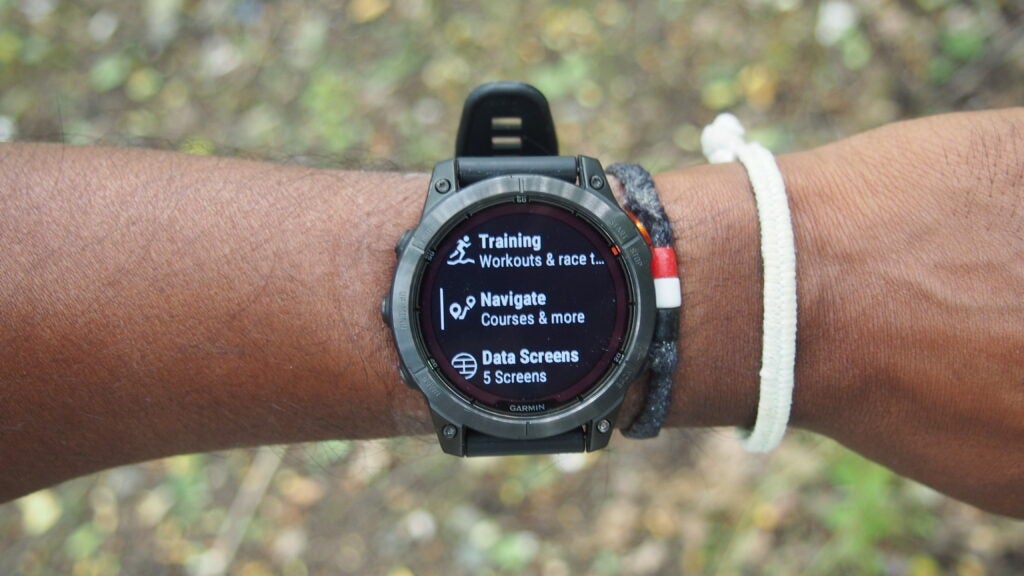
Some of that data is driven by your heart rate and Garmin has included a new heart rate sensor here, which I’ve found has been pretty solid on the whole. It managed to handle high intensity activity pretty well when up against Garmin’s own HRM Pro Plus heart rate monitor chest strap, but it still had the odd high heart rate spike that didn’t convince me that it solved the problems that wrist-based heart rate monitors usually suffer from.
Overall, the Fenix 7 Pro is every bit as good a watch for the outdoors as the Fenix 7, but when you factor in that most of the software features will roll back to the original watch, that leaves just the flashlight and heart rate sensor as the biggest gains here.
Battery life
- Up to 22 days in smartwatch mode
- Up to 23 hours in top GPS mode
- Up to 70 days in expedition mode
One of the biggest reasons why you’d grab a Fenix smartwatch is for the battery life, and the Pro delivers the same kind of big battery numbers as the Fenix 7.
The 47mm version should last up to 18-days in smartwatch mode or 22-days when you’ve exposed the Power Glass lens to enough sunlight to benefit from those extra solar charging chops.
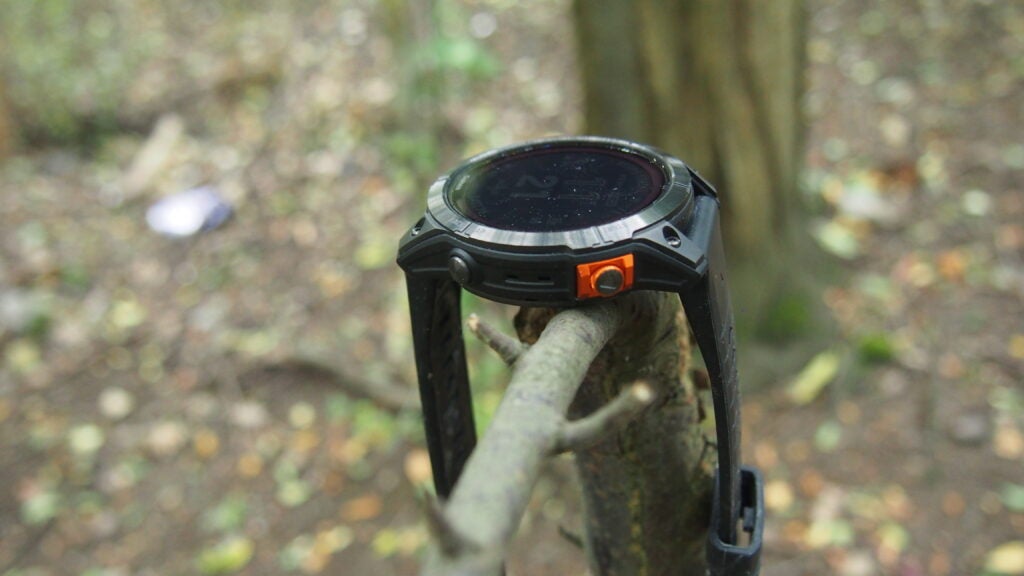
Switch to the top multi-band tracking mode and you’re getting the same 23-hours (26-hours with solar) as the Sapphire solar edition Fenix 7. You still have an Expedition mode that gets you anywhere from 40-74 days.
Having used the Fenix 7, I can tell you that battery performance is pretty much the same. You can absolutely get a couple of weeks out of the 7 Pro with notifications enabled, continuous monitoring of heart rate and using the multi-band mode.
Garmin still includes its battery saver mode, where you can customise what features are disabled or disconnected. Switching power modes and the level of GPS accuracy during tracking will work to push things even further, making it better suited for multi-day use.
Latest deals
Should you buy it?
You want a feature-packed outdoor watch with a flashlight: The Fenix 7 Pro is packed with great sports tracking, training, mapping and analysis features and now comes with a handy flashlight mode too.
You already have a Fenix 7: Flashlight and new heart rate sensor aside, all the big new software features on the Pro are coming to the original Fenix 7 series, making it a smarter buy.
Final Thoughts
Garmin is doing its best to drown out the Apple noise by adding even more models and versions of its outdoor watch. It will always have that battery life and level of tracking and training analysis that sets it apart from the competition, but with the Epix Pro catching up on the battery front, it might not be Garmin’s flagship watch for long. Plus, if you’re not too fussed about the new torch and the updated sensor then you may want to consider the original (and cheaper) Garmin Fenix 7.
How we test
We thoroughly test every smartwatch we review. We use industry standard testing to compare features properly and we use the watch as our main device over the review period. We’ll always tell you what we find and we never, ever, accept money to review a product.
Worn as our main tracker during the testing period
Heart rate data compared against dedicated heart rate devices
FAQs
No, the Fenix 7 cannot answer calls. That type of support is currently only available on the Garmin Venu 2 Plus.
Yes, the Garmin Fenix 7 does have a touchscreen and can be used to navigate menu screens, and the built-in mapping systems.
Sustainability
TrustedReviews’ holds the fact that global warming is not a myth as a core value and will continuously endeavor to help protect our planet from harm in its business practices.
As part of this mission, whenever we review a product we send the company a series of questions to help us gauge and make transparent the impact the device has on the environment.
We currently haven’t received answers to the questions on this product, but will update this page the moment we do. You can see a detailed breakdown of the questions we ask and why in our sustainability info page.
Verdict
The Garmin Fenix 7 Pro is another Garmin outdoor watch with big features and a big battery life, but there are few reasons to grab it if you already have the Fenix 7, or you can pick up the non-Pro 7 for less.
Pros
- Still great battery life
- Added map features
- Solid sports tracking
Cons
- Not a hugely different experience from the Fenix 7
- Heart rate sensor doesn’t offer radical improvements
- Improved MIP display just a touch brighter and clearer
-
LED flashlight on all Fenix 7 Pro models:With customisable light options -
Endurance and Hill Scores:Keep a better eye on your recovery -
Next generation Memory In Pixel display:Easier to read outdoors
Introduction
The Garmin Fenix 7 Pro sees Garmin give its much-loved outdoor watch another Pro upgrade after launching the Fenix 7 back in January 2022.
There’s hardware and software improvements onboard, including giving all Fenix 7 Pro models the LED flashlight treatment and adding improved heart rate sensors and displays.
Garmin’s also enhancing features like its already impressive mapping system, as well as implementing more metrics for those who want a clearer sense if all their training is all paying off.
It costs less than the Garmin Epix Pro that has launched alongside it, but is still a pricey watch to pick up for your outdoor escapades. So is it worth going pro on the new Fenix? Here’s our take.

Design and screen
- LED flashlight on all Fenix 7 Pro models
- Improved display
- Upgraded heart rate sensor
- Waterproof up to 100 metres
Like the Fenix 7, the 7 Pro comes in the three same case sizes and is available in standard and sapphire editions with the latter getting you a higher quality bezel, Garmin’s Power Glass lens for additional solar charging and access to preloaded Topo maps. I had the middle 47mm version to test, but if you were to put the Garmin Fenix 7 and the 7 Pro side-by-side you’d easily mistake one for the other.
Garmin has made a few changes to better separate the Pro from non-Pro Fenix, though some of those changes are more obvious than the others.
Up front on the 47mm model, Garmin has a 1.3-inch, 260 x 260 resolution transflective memory in pixel display matching the size and resolution of the Fenix 7, though Garmin says the Pro has an improved transflective display. I’m not exactly sure how it’s been improved and Garmin hasn’t shared a great amount of detail on this either.
Having used the Fenix 7 and the 7 Pro together, I can’t say I’ve seen a huge difference in how the old display and the new display behave when interacting with it, or how it handles more challenging visibility conditions. It’s perhaps a touch brighter and clearer, though I never felt that there was much wrong with the 7’s display.

The other big change lies around back with the optical heart rate sensor, where Garmin also says it’s made upgrades and you can clearly see things have changed in that design and the layout of the sensor that delivers heart rate and blood oxygen information. Garmin says it’s built its latest Elevate sensors alongside new algorithms to improve tracking accuracy specifically for a wider variety of activities.
Garmin is now also adding an LED flashlight on all Fenix models, where it was previously only available on the larger Garmin Fenix 7X. That means the 47mm and 42mm Fenix 7 packs that flashlight at the top of the watch case with the option to keep it on during tracking and to set it to multiple modes where it can pulse or blink.
Outside of those changes the Fenix 7 Pro feels a lot like the Fenix 7 to wear. It’s bulkier than Garmin’s Forerunner watches, but the 47mm variant didn’t feel heavy to wear on my somewhat skinny wrists. The strap is comfortable too, and is easily removable plus you’ve got a 10 ATM waterproof rating, which meant it was fine in our pool and open water swims.
Software and smartwatch features
- Works with Android and iOS
- View and respond to notifications
- Tweaked workout menu UI
Garmin hasn’t sought to make wholesale changes to the software experience on and off the watch, or in how it behaves when you’re not tracking your outdoor pursuits.

It works pretty consistently across Android and iOS with the Garmin Connect app, and while it lacks the AMOLED display used on Garmin’s Epix and Venu series, as well as the latest Forerunner watches, you do still have a touchscreen that’s responsive and a user interface that’s fairly customisable. There’s an overwhelming amount to tweak so if you’re moving up from a simpler watch, there’s a definite learning curve to knowing exactly how much this watch is capable of.
There are some small changes with the UI, mainly when entering into the menus before workout tracking where Garmin has grouped together settings for training, navigation, data screens, GPS mode and additional settings to try and simplify the process of tinkering exactly what it is that you’re after.
Beyond that it’s much the same as what we got on the Fenix 7 and that includes its smartwatch features. It still offers a good way to view notifications while the touchscreen elevates the usefulness of having music player and music controls, and if you have a supported bank then you do still have Garmin Pay on board. It’s the best sports watch that behaves like a smartwatch and while it’s not quite comparable to the Apple Watch Series 8, it should still serve those who yearn for a mix of the two form factors pretty well.
Fitness tracking
- Upgraded HR sensor
- Endurance and Hill scores
- More preloaded activities
Like previous Fenix Pro models, the Fenix 7 edition is about giving you everything available on the non-Pro Fenix that launched before it, and that core sports and activity tracking experience is very similar as a result.

Whether you’re using it for runs, swims, hikes or long walks, there’s a vast array of metrics, analysis, accurate GPS performance thanks to Garmin’s multi frequency positioning and rich mapping support, plus you feel like you’re wearing a watch that’s built to handle more rugged use.
One area that Garmin has sought to improve however is its mapping, adding features like relief shading to deliver more detailed maps, as well as an Up Ahead feature to let runners know about upcoming points of interest and checkpoints. There’s also now a split screen mode to view data and maps on the same screen, and there are now weather overlays, though that’s not available during tracking. Garmin already has arguably the best mapping support on a watch and these extras only serve to make it an even nicer experience overall. It should be noted though that these new features and others added to the Pro will come to the standard Fenix 7 as well.
We are also getting new Endurance and Hill scores, which try to take existing metrics like VO2 Max and look at your short and long-term workout history to help you better understand if you’re well equipped to tackle hill-laden routes and races or can maintain performance over a sustained period.
What it feels like Garmin is doing with these scores is to simplify how it communicates the effectiveness of your training, a lot like it did with its Training Readiness score, which is underpinned by a host of other pieces of data. They don’t feel like groundbreaking insights but they do manage to present data in a far more digestible way.

Some of that data is driven by your heart rate and Garmin has included a new heart rate sensor here, which I’ve found has been pretty solid on the whole. It managed to handle high intensity activity pretty well when up against Garmin’s own HRM Pro Plus heart rate monitor chest strap, but it still had the odd high heart rate spike that didn’t convince me that it solved the problems that wrist-based heart rate monitors usually suffer from.
Overall, the Fenix 7 Pro is every bit as good a watch for the outdoors as the Fenix 7, but when you factor in that most of the software features will roll back to the original watch, that leaves just the flashlight and heart rate sensor as the biggest gains here.
Battery life
- Up to 22 days in smartwatch mode
- Up to 23 hours in top GPS mode
- Up to 70 days in expedition mode
One of the biggest reasons why you’d grab a Fenix smartwatch is for the battery life, and the Pro delivers the same kind of big battery numbers as the Fenix 7.
The 47mm version should last up to 18-days in smartwatch mode or 22-days when you’ve exposed the Power Glass lens to enough sunlight to benefit from those extra solar charging chops.

Switch to the top multi-band tracking mode and you’re getting the same 23-hours (26-hours with solar) as the Sapphire solar edition Fenix 7. You still have an Expedition mode that gets you anywhere from 40-74 days.
Having used the Fenix 7, I can tell you that battery performance is pretty much the same. You can absolutely get a couple of weeks out of the 7 Pro with notifications enabled, continuous monitoring of heart rate and using the multi-band mode.
Garmin still includes its battery saver mode, where you can customise what features are disabled or disconnected. Switching power modes and the level of GPS accuracy during tracking will work to push things even further, making it better suited for multi-day use.
Latest deals
Should you buy it?
You want a feature-packed outdoor watch with a flashlight: The Fenix 7 Pro is packed with great sports tracking, training, mapping and analysis features and now comes with a handy flashlight mode too.
You already have a Fenix 7: Flashlight and new heart rate sensor aside, all the big new software features on the Pro are coming to the original Fenix 7 series, making it a smarter buy.
Final Thoughts
Garmin is doing its best to drown out the Apple noise by adding even more models and versions of its outdoor watch. It will always have that battery life and level of tracking and training analysis that sets it apart from the competition, but with the Epix Pro catching up on the battery front, it might not be Garmin’s flagship watch for long. Plus, if you’re not too fussed about the new torch and the updated sensor then you may want to consider the original (and cheaper) Garmin Fenix 7.
How we test
We thoroughly test every smartwatch we review. We use industry standard testing to compare features properly and we use the watch as our main device over the review period. We’ll always tell you what we find and we never, ever, accept money to review a product.
Worn as our main tracker during the testing period
Heart rate data compared against dedicated heart rate devices
FAQs
No, the Fenix 7 cannot answer calls. That type of support is currently only available on the Garmin Venu 2 Plus.
Yes, the Garmin Fenix 7 does have a touchscreen and can be used to navigate menu screens, and the built-in mapping systems.
Sustainability
TrustedReviews’ holds the fact that global warming is not a myth as a core value and will continuously endeavor to help protect our planet from harm in its business practices.
As part of this mission, whenever we review a product we send the company a series of questions to help us gauge and make transparent the impact the device has on the environment.
We currently haven’t received answers to the questions on this product, but will update this page the moment we do. You can see a detailed breakdown of the questions we ask and why in our sustainability info page.


















